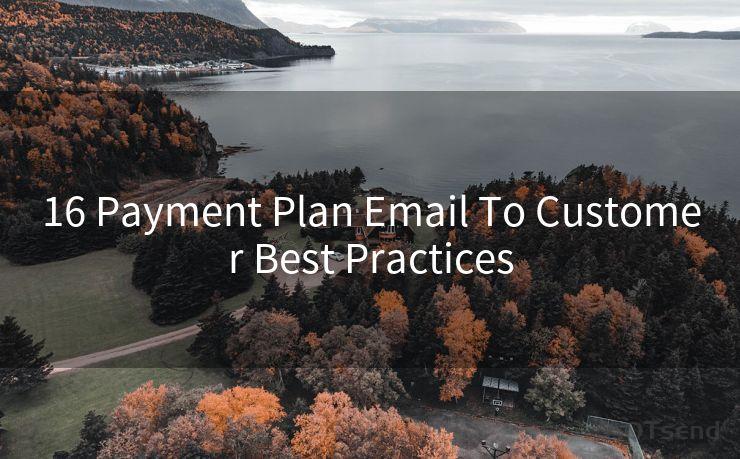16 Payment Plan Email To Customer Best Practices




When it comes to communicating payment plans to customers, emails play a crucial role. Here are 16 best practices to help you craft an effective payment plan email to your customers.
1. Clear Subject Line
Start with a clear and concise subject line that summarizes the content of the email. For example, "Your New Payment Plan Details".
2. Personalized Greeting
Always use the customer's name in the greeting to add a personal touch and grab their attention.
3. Introduction to the Payment Plan
Begin the email by briefly introducing the payment plan and its benefits. Mention how it can help customers manage their finances better.
4. Detailed Payment Plan Outline
Provide a clear and detailed outline of the payment plan, including the total amount, the number of installments, due dates, and any applicable interest or fees.
5. Simple and Straightforward Language
Use simple language to ensure the customer understands the terms and conditions of the payment plan without any confusion.
6. Highlight Key Benefits
Emphasize the key benefits of the payment plan, such as flexibility, convenience, and affordability, to encourage customers to take advantage of it.
7. Clear Call to Action
Include a prominent call to action button or link that directs customers to a secure payment portal or provides instructions on how to proceed with the payment plan.
8. Provide Contact Information
Make sure to include your contact information or a helpdesk email/phone number in case customers have any queries or concerns regarding the payment plan.
9. Security and Privacy Assurance
Reassure customers about the security and privacy of their payment information to build trust and confidence.
10. Avoid Jargon
Refrain from using complex financial jargon that might confuse customers. Keep the language simple and easy to understand.
11. Mobile-Friendly Format
Ensure that the email is optimized for mobile devices, as many customers check their emails on the go.
12. Use Visual Elements
Include charts, tables, or infographics to visually represent the payment plan details, making it easier for customers to understand.
13. Thank the Customer
Always thank the customer for their business and express appreciation for their trust and support.
14. Follow-Up Communication
Mention that you will be sending follow-up emails regarding payment reminders and updates to keep the communication channel open.
15. Unsubscribe Option
Include an unsubscribe link at the bottom of the email, as per email marketing best practices and legal requirements.
16. Testing and Revision
Regularly test and revise your email templates based on customer feedback and analytics to ensure maximum effectiveness.
By following these 16 best practices, you can craft a payment plan email that is clear, concise, and customer-friendly, leading to a better customer experience and improved payment plan adoption rates. Remember, communication is key in maintaining a good relationship with your customers, so make sure your emails reflect that.

🔔🔔🔔
【AOTsend Email API】:AOTsend is a Managed Email Service for sending transactional emails. Support Email Types: reminders, authentication, confirmations, notifications, verification codes, invoices, password resets, account activations, billing statements, two-factor authentication (2FA), and one-time passwords (OTP) emails, etc. $0.28 per 1000 Emails. 99% Delivery, 98% Inbox Rate.
You might be interested in:
Why did we start the AOTsend project, Brand Story?
What is a Managed Email API, How it Works?
Best 25+ Email Marketing Platforms (Authority,Keywords&Traffic Comparison)
Best 24+ Email Marketing Service (Price, Pros&Cons Comparison)
Email APIs vs SMTP: How they Works, Any Difference?




Scan the QR code to access on your mobile device.
Copyright notice: This article is published by AotSend. Reproduction requires attribution.
Article Link:https://www.mailwot.com/p4706.html



